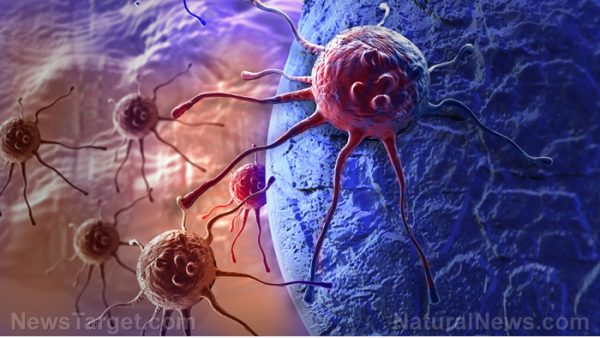It’s the vitamin D: Cancer patients exposed to bright light had better sleep after receiving treatment
08/09/2018 / By Rhonda Johansson

A randomized controlled clinical trial displayed the efficacy of bright light therapy in improving the sleeping quality and patterns of cancer patients. The team from the American Academy of Sleep Medicine say that their pilot study suggests an inexpensive and safe way for fatigued recovering cancer patients to sleep better.
The goal of the study was to find out if bright light therapy could help cancer patients improve their sleep efficiency. This was defined as the percentage of time spent sleeping and how refreshed a person feels upon waking up. It has been observed that recovering cancer patients often experience sleep disturbances, even years after their treatment. This becomes a compounding problem as a lack of sleep prevents the immune system from healing from whatever cancer therapy the patient was subjected to. In turn, cancer patients suffering from insomnia are at increased risk of succumbing to other medical conditions.
As part of the study, 44 recovering cancer patients who met the criteria for clinically significant fatigue were observed. The bright light therapy group displayed dramatic improvements in their sleep patterns after only three weeks. Those who were not enrolled in the bright light therapy program remained at low levels of sleep efficiency.
Lead author Lisa M. Wu, Ph.D. said, “In a pilot study, a systemic light exposure intervention with a mixed group of fatigued cancer survivors was significantly more effective than comparison dim light exposure in improving sleep efficiency.”
The authors conclude that larger-scale studies need to be made to truly validate the benefits of bright light therapy in the treatment of fatigue among recovering cancer patients.
How bright light therapy works
Light therapy is built on the manipulation and regularization of the circadian rhythm. This is the internal clock that tells your body when to sleep and when it should be awake. Those who suffer from sleep disorders typically have abnormal production of hormones related to the circadian rhythm. For example, melatonin, the sleep hormone, is regulated by the circadian clock located in the suprachiasmatic nucleus (SCN) of the hypothalamus. Whether caused by lifestyle or as a result of treatment, disruptions in the circadian rhythm could lead to a sleep disorder.
Light therapy “resets” this by helping the body recognize when to sleep and when to wake. By resetting the internal clock, patients are able to have a good sleep. The therapy exposes the eyes to intense but safe amounts of light for specific and regular lengths of time.
Science mimics nature
Bright light therapy is effective, but really, it’s just a substitute to what is already outside. Unless you live in Antarctica, you can bask (sensibly) in the sun every day. Scores of research have proven that vitamin D plays a huge role in cancer prevention and treatment. Oncologists have seen that high levels of vitamin D decreases the risk of developing various forms of cancer by 30 to 50 percent. Furthermore, vitamin D helps patients recover faster from such treatments as chemotherapy by building a stronger immune system.
In terms of this new study, it is apparent that vitamin D also influences sleep efficiency. This further proves that nature is a safer and cheaper option to feeling better and being healthier.
Vitamin D is mostly produced through sun exposure. However, you can increase your vitamin D levels by buying trusted supplements from reliable wellness stores. (Related: Top 10 natural food sources of immunity-boosting vitamin D.)
Doctors have stated that the number of Americans deficient in vitamin D has increased in the last few years.
Read more articles about the health benefits of vitamin D and light therapy at VitaminD.news.
Sources include:
Tagged Under: cancer, cancer treatments, fatigue, insomnia, light therapy, natural cures, natural remedies, natural sleep solutions, sleep conditions, sleep disorders, sleep therapy, vitamin D








